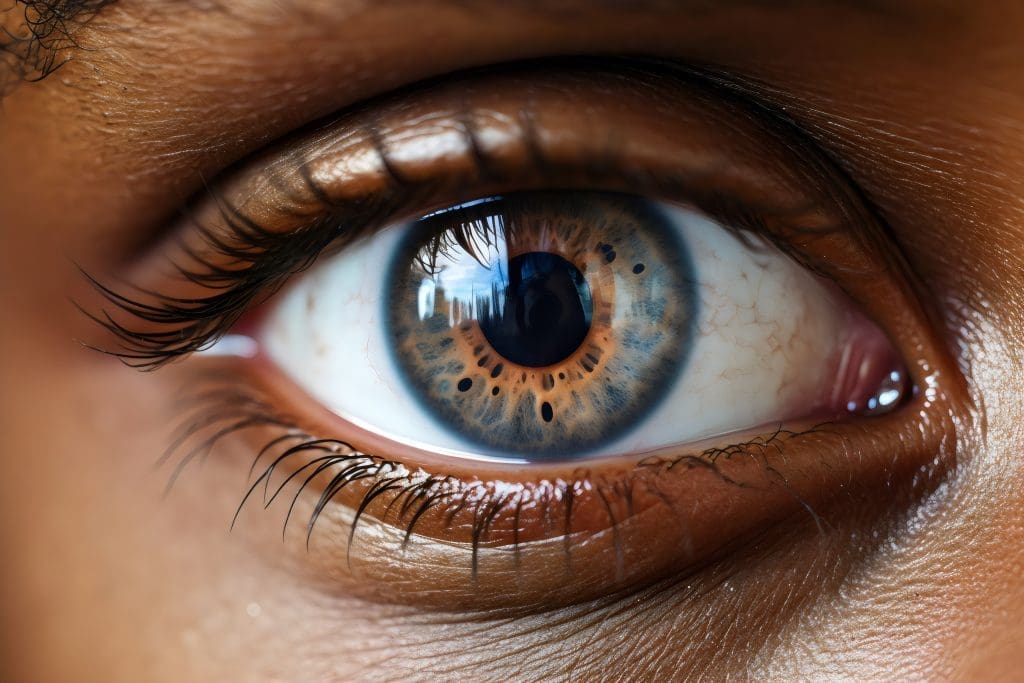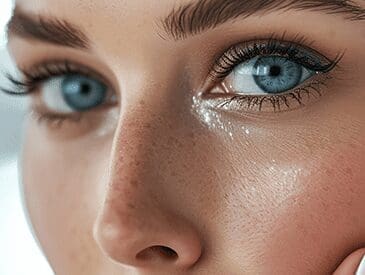When patients come for a consultation about eyelid surgery it is usually due to concerns about extra skin and soft tissue around the eye. Sometimes there is another condition involved where the eyelid itself sags down over the pupil.

What is Ptosis?
You or your primary care doctor may have identified eyelid sagging, called “ptosis,” which refers to the drooping of the upper eyelid down onto the eye, sometimes impairing vision. In ptosis, the upper eyelid can sag down over the pupil, which is the black dot in the center of the eye that allows light to pass to the retina to register vision. Ptosis is repaired by performing surgery on the outer or inner layers of the upper eyelid, specifically targeting the cause of the ptosis. The most common cause for ptosis in adults is called involutional, or acquired, ptosis. This is due to stretching of the connective tissue band that connect the muscle the elevates the upper eyelid, the levator muscle, from the small piece of cartilage located at the edge of the eyelid. If the “levator aponeurosis” is significantly stretched, you may not be able to your eyelid, which may require surgery to tighten this lifting mechanism. This surgery is sometimes required at the time of a “blepharoplasty,” which is commonly referred to as an eyelid lift.
What is Dermatochalasis?
Eyelid ptosis is different from extra skin of the upper and/or lower eyelid, which is called “dermatochalasis.” Common features of dermatochalasis include:
- Sagging, puffy, or loose skin around the eyes
- Under-eye bags, or tear trough deformity, which forms a half circle under the eye in the lower eyelid
- Excess fat deposits
- Unwanted eyelid folds, coarse and fine lines
- Hooded eyelid that drapes down over the side portion of the upper eyelid
- Blockage of portions of the field of vision
If extra upper eyelid skin is excessive enough, then it can also block vision. The upper and side vision can be obstructed by excess upper eyelid skin hooding. This results when there is so much upper eyelid skin that it hangs down off the side of the upper eyelids. In most cases of dermatochalasis, there is not sagging of the entire upper eyelid down over the pupil, even in cases of severe upper eyelid skin excess.
How Does an “Eyelid Lift” Work?
A common term that you may use to refer to eyelid surgery for skin excess is an eyelid lift, otherwise known as a blepharoplasty, meaning In a blepharoplasty procedure, each portion of an eyelid’s signs of aging can be reversed through:
- The removal of excess skin
- Removal of portions of the fat pads
- Tightening of the internal structures that have become lax and sagging
Not only can an eyelid lift eliminate these cosmetic concerns, but it can help you obtain a more refreshed, youthful, and attractive appearance. Candidates for an eyelid lift include anyone that is in reasonably good health and is unhappy with the skin around their eye.
So in some ways, the term “eyelid lift” is a bit of a misnomer. What most people are referring to when they say eyelid lift is actually the removal of extra skin from the surface of the eyelid, which does not directly lift the eyelid but rather simply removes extra skin and fat on the eyelids. This is known as a blepharoplasty.

Insurance Coverage for Eyelid Surgery
Since eyelid surgery is an outpatient procedure, you’ll be able to return home immediately after. Patients typically experience swelling, bruising, and some mild discomfort immediately following the procedure up until a few days. Some also experience blurred vision, dry eyes, and a slight sensitivity to bright light. Keep in mind that these side effects are completely normal for this type of procedure and should disappear after a few days.
Dr. Day and his team will direct you to use a cold compress, pain medication, and prescription eyedrops to help you manage discomfort and minimize swelling in the days following your surgery. They will also provide a prescription ointment to apply to your surgical incisions. It is recommended that you take 3-5 days off work and avoid heavy lifting and exercise for up to two weeks following the surgery.
The lower eyelids can sometimes harbor signs of aging in the form of under eye bags, or “tear trough deformity.” This is a correctable condition, which is treated by the surgical removal of some very predictable fat pads along with elimination of excess skin. A very reliable approach in a paper by leading experts describes our approach to this condition. If you’ve been told that you look tired, unrested, have under-eye bags, or employ the famous cucumber slices and cool compresses frequently, then you may benefit from this uplifting procedure. It can have a powerful effect on the signs of facial aging in the middle face. Reach out today to see if you’re a candidate!



